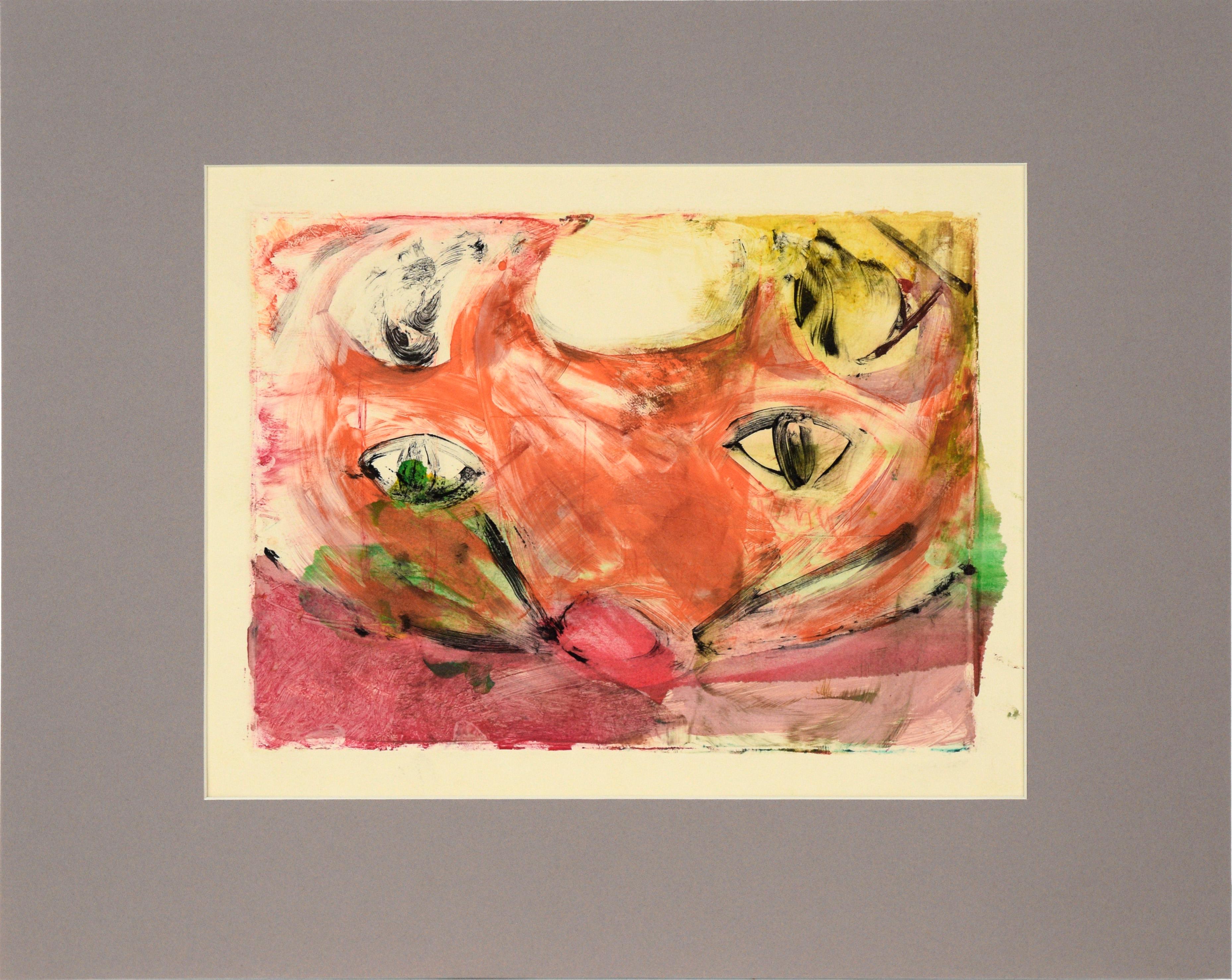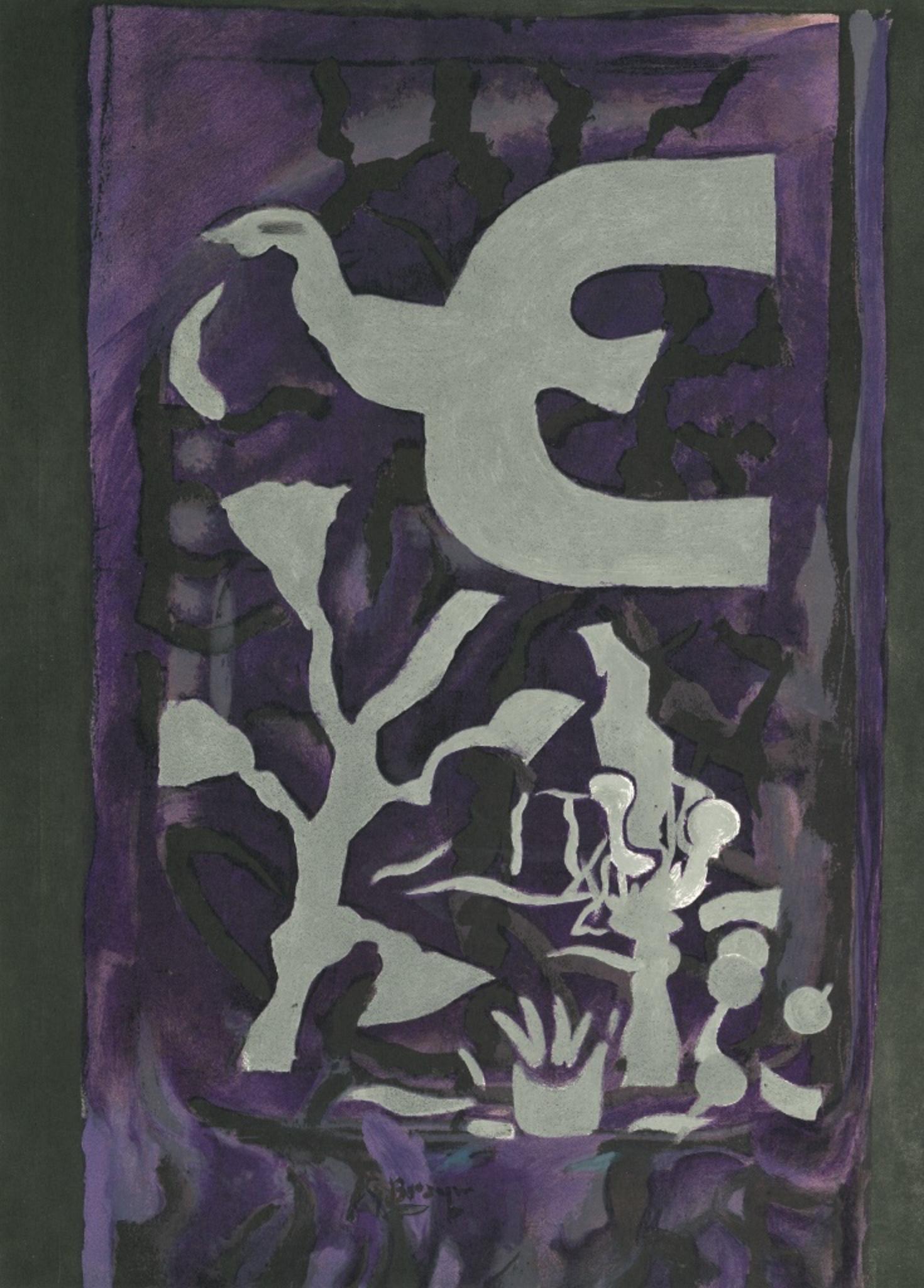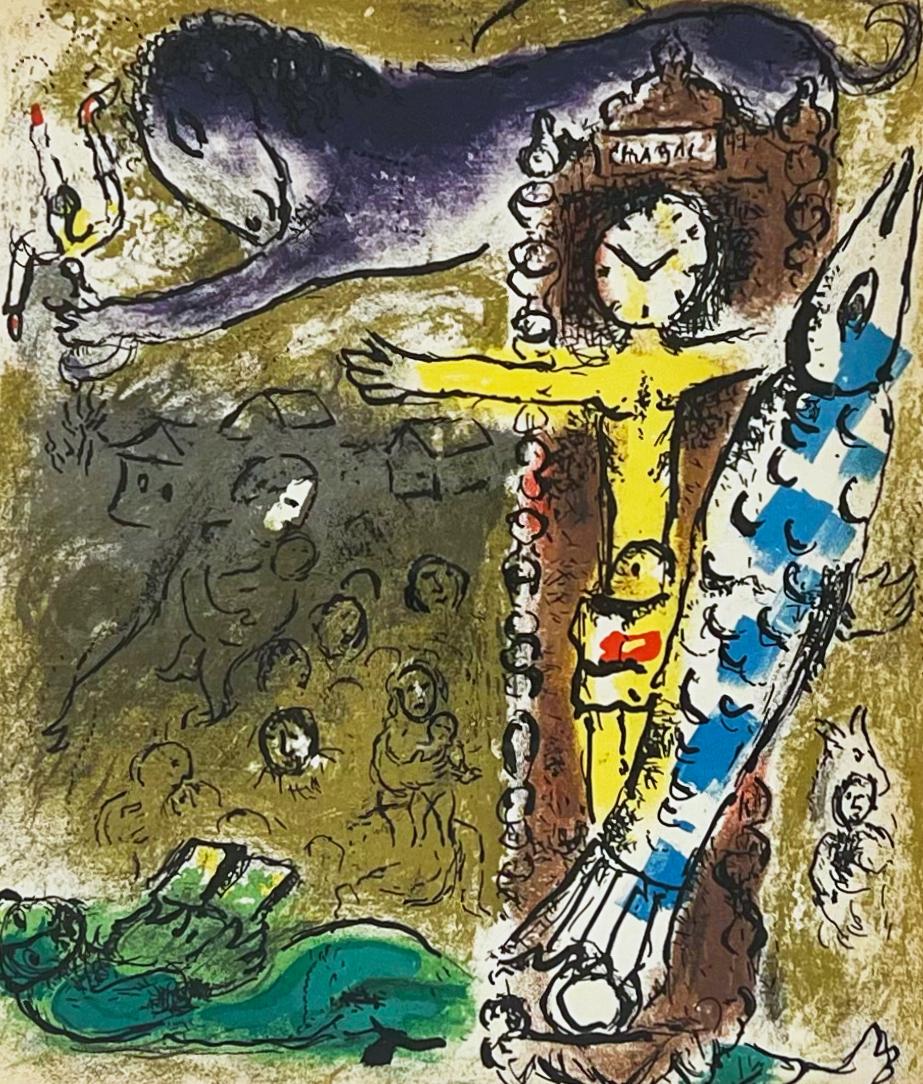Items Similar to Original Vintage Henri Matisse Exhibition Poster, The Tate Gallery, 1953
Video Loading
Want more images or videos?
Request additional images or videos from the seller
1 of 12
Original Vintage Henri Matisse Exhibition Poster, The Tate Gallery, 1953c. 1953
c. 1953
About the Item
Original Vintage Henri Matisse Exhibition Poster, The Tate Gallery, 1953
"The Sculpture of Matisse and Three Paintings with Studies, 9 January - 22 February 1953, The Tate Gallery"
Original lithograph poster designed by Henri Matisse (French, 1869 - 1954) A lithograph printed by Mourlot for an exhibition of Matisse's Sculptures at the Tate Gallery, specifically for the exhibition in 1953, the year before his death. Between 1900 and 1905, Matisse painted in the style called Fauves (French for “wild beasts”). Many of his finest works were created in the decade or so after 1906. Matisse developed a style that emphasized flattened forms and decorative pattern. After 1930, he adopted a bolder simplification of form. In his final years, when ill health prevented him from painting, he created an important body of work in the medium of cut paper collage, as seen in this poster.
Mat size: 36"H x 27"W
Poster size: 28"H x 19.5"W
Presented in a new white mat with foam core backing.
Henri Matisse came from a family who were of Flemish origin and lived near the Belgian border. At eight o'clock on the evening of December 31, 1869, he was born in his grandparents' home in the town of Le Cateau in the far north of France. His father was a self-made seed merchant who was a mixture of determination and tightly coiled tension.
Henri had no clear idea of what he wanted to do with his life. He was a twenty-year-old law clerk convalescing from appendicitis when he first began to paint, using a box of colors given to him by his mother. Little more than a year later, in 1890, he had abandoned law and was studying art in Paris. The classes consisted of drawing from plaster casts and nude models and of copying paintings in the Louvre. He soon rebelled against the school's conservative atmosphere; he replaced the dark tones of his earliest works with brighter colors that reflected his awareness of Impressionism. Matisse was also a violinist; he took an odd pride in the notion that if his painting eye failed, he could support his family by fiddling on the streets of Paris.
Henri found a girlfriend while studying art, and he fathered a daughter, Marguerite, by her in 1894. In 1898, he married another woman, Amelie Parayre. She adopted the beloved Marguerite; they eventually had two sons, Jean, a sculptor and Pierre who became an eminent art dealer. Relations between Matisse and his wife were often strained. He often dallied with other women, and they finally separated in 1939, over a model who had been hired as a companion for Mme. Matisse. She was Madame Lydia, and after Mme. Matisse left, she remained with Matisse until he died.
Matisse spent the summer of 1905 working with Andre Derain in the small Mediterranean seaport of Collioure. They began using bright and dissonant colors. When they and their colleagues exhibited together, they caused a sensation. The critics and the public considered their paintings to be so crude and so roughly crafted that the group became known as Les Fauves (the wild beasts).
By 1907, Matisse moved on from the concerns of Fauvism and turned his attention to studies of the human figure. He had begun to sculpt a few years earlier. In 1910, when he saw an exhibition of Islamic art, he was fascinated with the multiple patterned areas and adapted the decorative universe of the miniatures to his interiors. As a continuation of his interest in the "exotic", Matisse made extended trips to Morocco in 1912 and 1913.
At the end of 1917, Matisse moved to Nice; he would spend part of each year there for the remainder of his life. A meticulous dandy, he wore a light tweed jacket and a tie when he painted. He never used a palette, but instead squeezed his colors on to plain white kitchen dishes and used them just as they came out of the tube.
During the early 1930s Matisse was engaged in designing murals for the Barnes Foundation near Philadelphia. He was also commissioned to illustrate a number of books, for which he made etchings.
Although he suffered a serious illness and underwent surgery for intestinal cancer early in 1941, he was able to continue. His recovery left him unable to paint comfortably at an easel. Instead of relaxing as might have been expected, he grew younger as he grew older. He turned to colored paper and a pair of scissors, raising color to an emotional level and simplifying forms to a childish simplicity. While he worked, he saw almost no one except the handsome Russian Livia Delectorskaya, who was his chief model, housekeeper, secretary and protector.
Written and submitted by Jean Ershler Schatz, artist and researcher from Laguna Woods, California.
- Creation Year:c. 1953
- Dimensions:Height: 36 in (91.44 cm)Width: 27 in (68.58 cm)Depth: 0.25 in (6.35 mm)
- Medium:
- Movement & Style:
- After:(after) Henri Matisse (French)
- Period:
- Condition:Poster was attached to a cardstock backing by a previous owner. Puncture holes on the top and bottom center, as expected for an exhibition poster. Some mild surface artifacts from age.
- Gallery Location:Soquel, CA
- Reference Number:
About the Seller
4.9
Platinum Seller
These expertly vetted sellers are 1stDibs' most experienced sellers and are rated highest by our customers.
Established in 1986
1stDibs seller since 2014
2,517 sales on 1stDibs
Typical response time: <1 hour
- ShippingRetrieving quote...Ships From: Soquel, CA
- Return PolicyA return for this item may be initiated within 14 days of delivery.
More From This SellerView All
- Colorful Cat Face - Transfer Monotype in Water Based Ink on PaperLocated in Soquel, CAColorful Cat Face - Transfer Monotype in Water Based Ink on Paper Original transfer monotype painting by California artist Heather Speck (American, 20th...Category
1990s Fauvist Figurative Prints
MaterialsPaper, Monotype, Ink
- L'enfant et les Violons - Fauvist Abstracted FigurativeBy Théo TobiasseLocated in Soquel, CA"L'enfant et les violons" - colorful signed original lithography by Theo Tobiasse (Lithuanian, 1927 - 2012). He was born in Israel of Lithuanian parents. Signed lower right. Numbered...Category
1970s Fauvist Figurative Prints
MaterialsPaper, Lithograph
- "Parts of a Kimono" Multi-Layer Collagraph in Ink on PaperBy Patricia A. PearceLocated in Soquel, CA"Parts of a Kimono" Multi-Layer Collagraph in Ink on Paper Gorgeous purple mesh and rods collagraph by Patricia A. Pearce (American, b. 1948). Strips of fabric are draped over horiz...Category
1980s Contemporary Abstract Prints
MaterialsPaper, Ink, Lithograph
- Geometric Abstract Lithograph in the Style of Kandinsky by Harold WeinerLocated in Soquel, CAGeometric Abstract Lithograph in the Style of Kandinsky by Harold Weiner Playful abstract composition titled "Abstract" by Harold Weiner (20th Century). A small edition of 6 impressi...Category
1960s Abstract Abstract Prints
MaterialsPaper, Ink, Lithograph
- "Blue Approach #2" - Hand-Augmented CollotypeBy Patricia A. PearceLocated in Soquel, CA"Blue Approach #2" - Hand-Augmented Collotype Delicate and layered collotype on both sides of heavy bond paper by Patricia A. Pearce (American, b. 1948). The background of this piec...Category
Late 20th Century Abstract Geometric Abstract Prints
MaterialsCopper
- Altered Illusions 1 CollographBy Patricia A. PearceLocated in Soquel, CADramatic embossed collagraph titled "Altered Illusions 1" by Patricia A. Pearce (American, b. 1948). Titled and signed along the bottom edge (image altered for better viewing). Presented in a new off-white mat with foam core backing. Mat size: 32"H x 27"W Paper size: 28"H x 22.25"W Patricia Pearce (American, b. 1948) is a California artist who attended San Francisco State and UC Irvine and was the Adjunct Professor of Fine Art at the College of San Mateo. Her early work on paper explored images of garments using various printmaking techniques. Later, she began to work mainly in collagraph and monotype prints creating singular images of kimonos and ribbons in her subtle shifting, subdued pieces are constructed in a three-step process. Awards include Grade Prize, 3rd Biennial Exhibition of Prints, Wakayama Japan; Grant, Peninsula Community Foundation. Collections: Nieman Marcus, San Francisco; Wells Fargo...Category
1980s Contemporary Abstract Prints
MaterialsPaper, Ink, Lithograph
You May Also Like
- CarmenBy (after) Marc ChagallLocated in New York, NYA very good impression of this color lithograph. Edition of 3000. Printed by Mourlot, Paris. Published by Editions of the Metropolitan Opera, New York.Category
1960s Fauvist Abstract Prints
MaterialsColor, Lithograph
- Au SquareBy Henri EvenepoelLocated in New York, NYA very good impression of this color lithograph. Edition of 2000. Published by "L'Estampe Moderne," Paris, with the blind stamp (Lugt 2790, lower right).Category
1890s Fauvist Abstract Prints
MaterialsColor, Lithograph
- Composition from Derriere Le Miroir - Lithograph after George Braque - 1964By George BraqueLocated in Roma, ITComposition from Derriere Le Miroir is a splendid lithograph realized after George Braque in 1964 The artwork is from Derriere Le Miroir. La Fondation Marguerite et Aimè Maeght, n.148. Printed by Ateliers de Maeght, Paris, 1964 Special issue of the magazine, published on the occasion of the inauguration of the Marguerite et Aimé Maeght Foundation...Category
1960s Fauvist Abstract Prints
MaterialsLithograph
- Christ in the Clock, from Chagall - Jacques LassaigneBy Marc ChagallLocated in Washington, DCArtist: Marc Chagall Title: Christ in the Clock Portfolio: Chagall - Jacques Lassaigne Medium: Lithograph Year: 1957 Edition: 6,000 Sheet Size: 9" x 7 7/8" Image Size: 9" x 7 7/8" Si...Category
1950s Fauvist Figurative Prints
MaterialsLithograph
- 'L'Escargot' Modern Art Colour Lithograph on Wove PaperBy Henri MatisseLocated in Toronto, CASigned on the plate by Matisse. From the portfolio ‘Dernières Oeuvres de Matisse 1950-1954’, known as Verve Vol. IX No. 35 & 36. Printed by Mourlot in Paris. Henri Matisse oversaw ...Category
1950s Fauvist Abstract Prints
MaterialsLithograph
- La Peche lithograph (woodcut)By Raoul DufyLocated in Belgrade, MTRaoul Dufy was an important multifaceted French artist who worked in a variety of media including painting, print making, mural design, theatre and costume design, upholstery, wall paper, ceramics, and fabric. In his paintings he often depicted the circus, equestrian scenes, Parisian cafe life, yachting scenes, colorful views of the French Riviera, and musical events in a distinctive style that combined the various artistic trends of the day, most notably Fauvism. Born in 1877 in Le Havre France, and after a year of military service in 1900, Dufy won a scholarship to the Ecole Nationale superieure des Beaux-Arts, in Paris, studying under Othon Friesz. He exhibited extensively throughout Paris and France at the various salons, including the Salon des Tuileries. For the 1937 Exposition Internationale in Paris, Dufy completed one of the largest paintings ever conceived, a 250...Category
Early 20th Century Fauvist Abstract Prints
MaterialsLithograph, Woodcut





